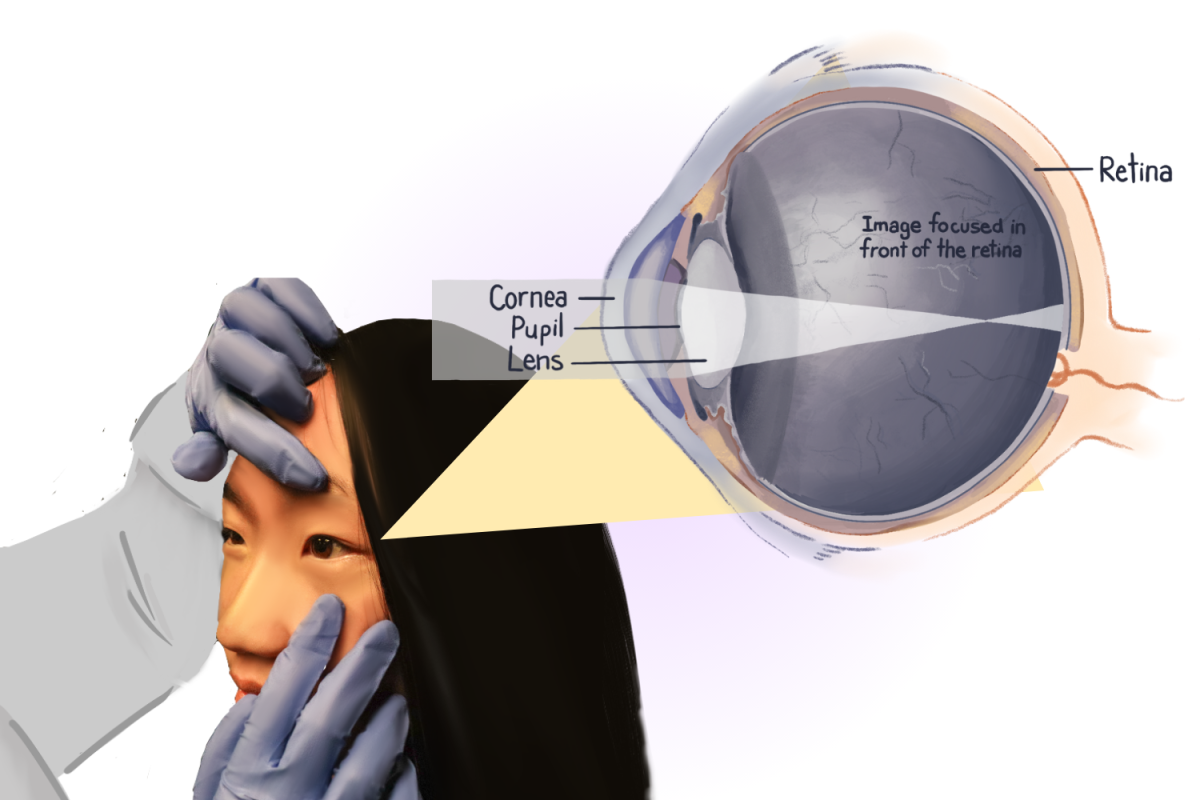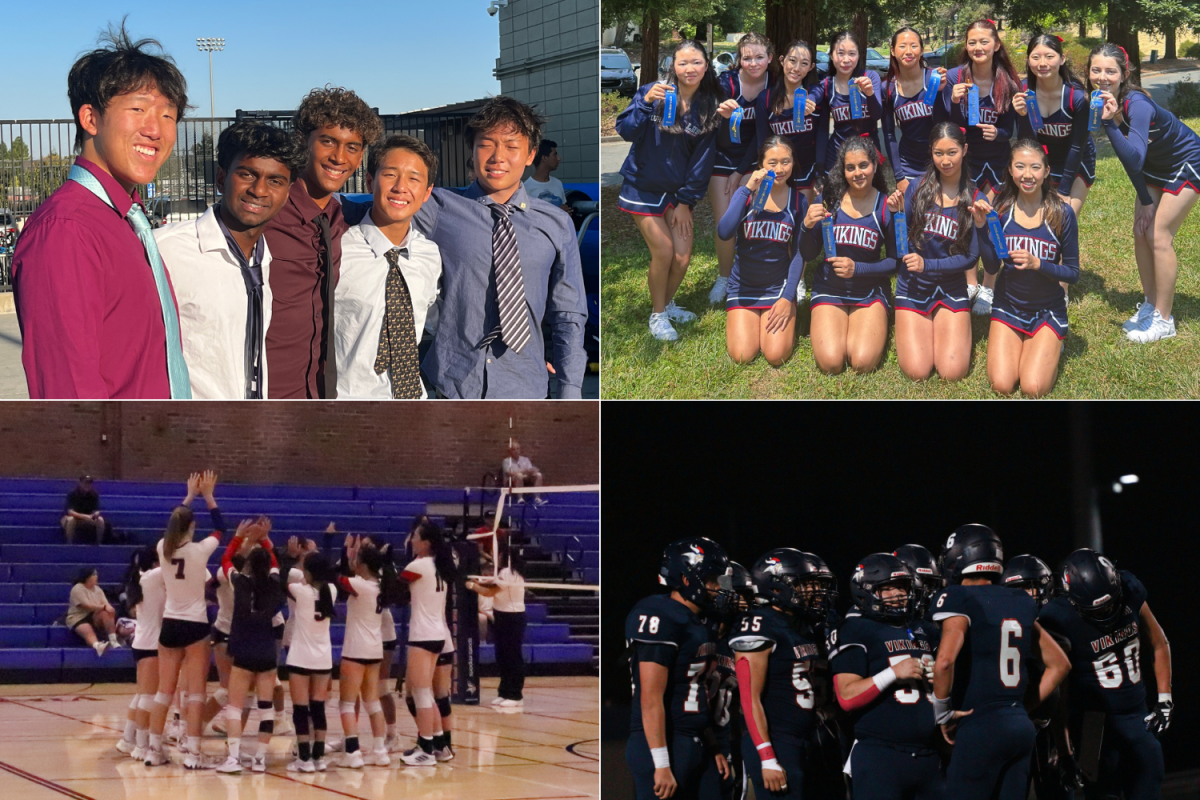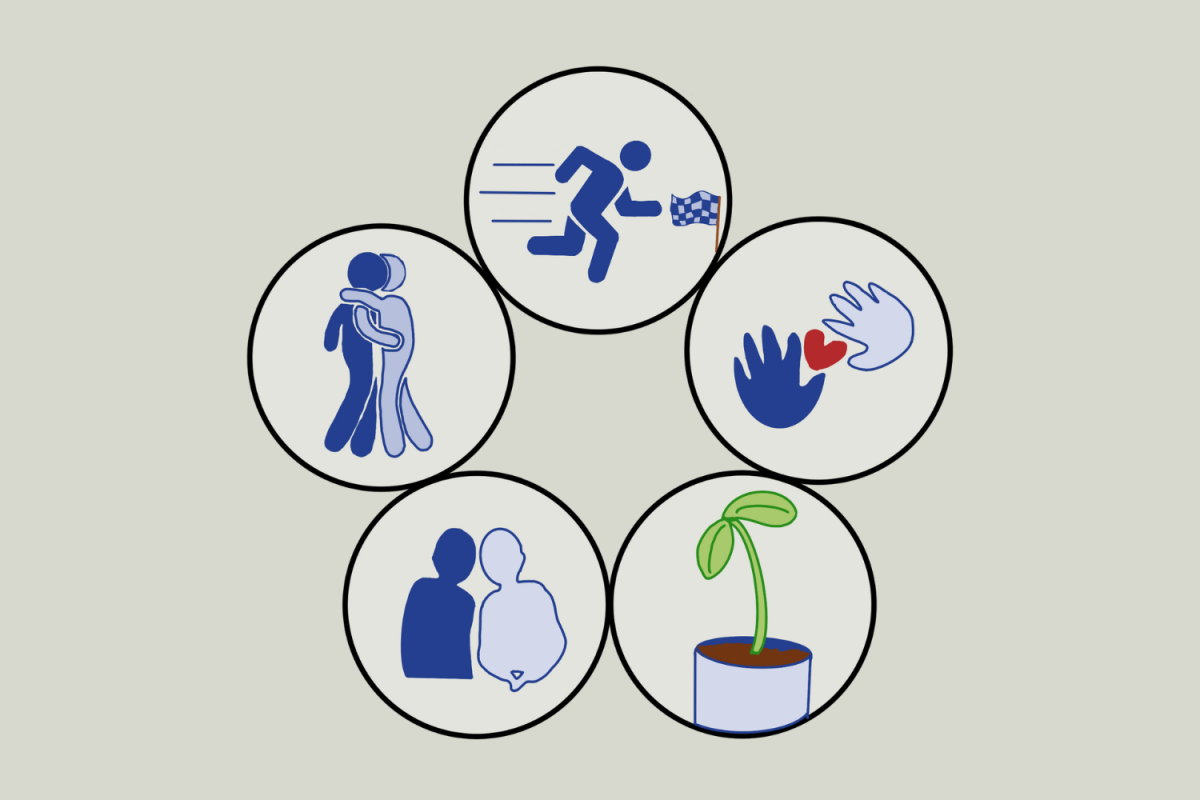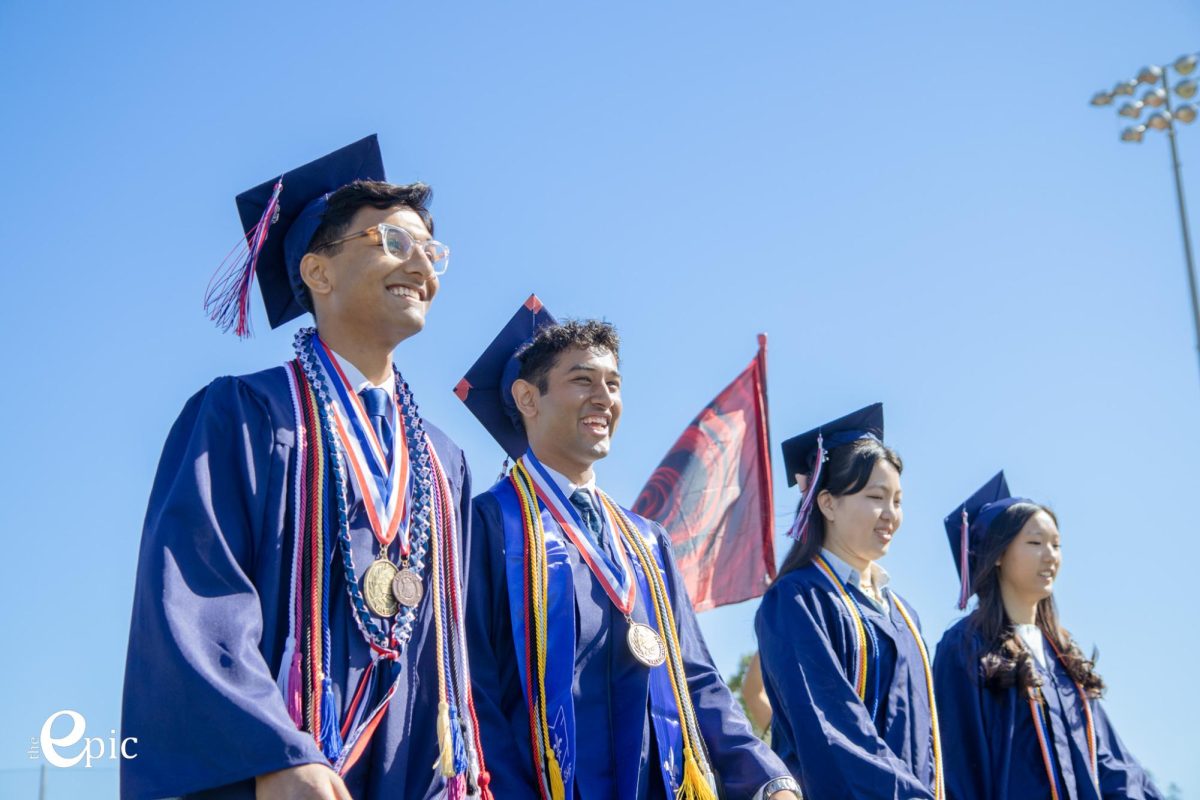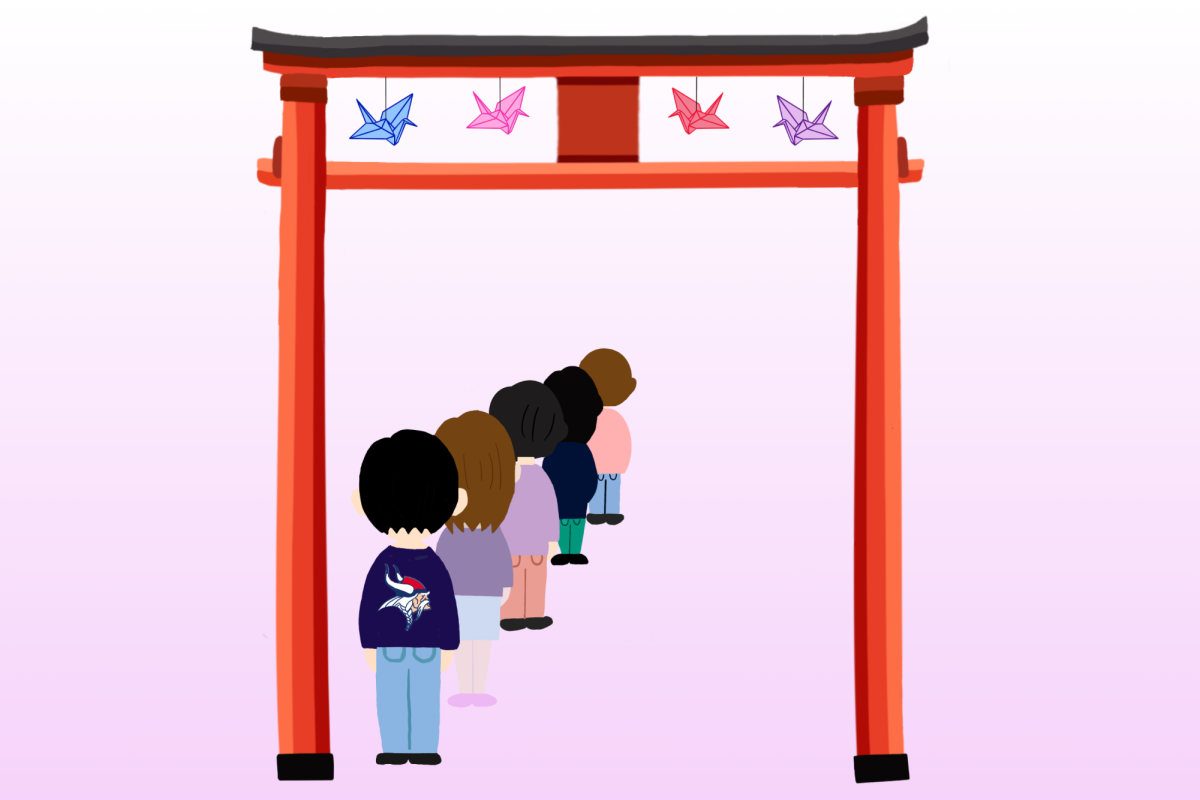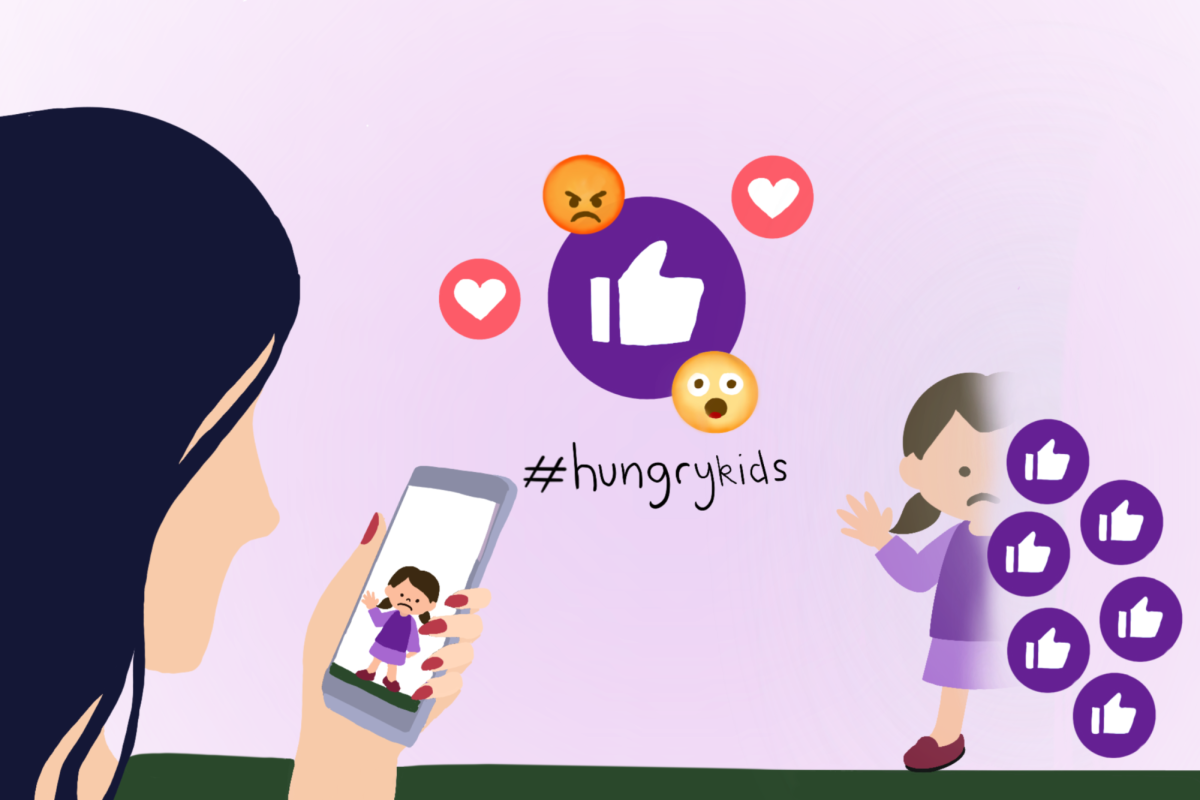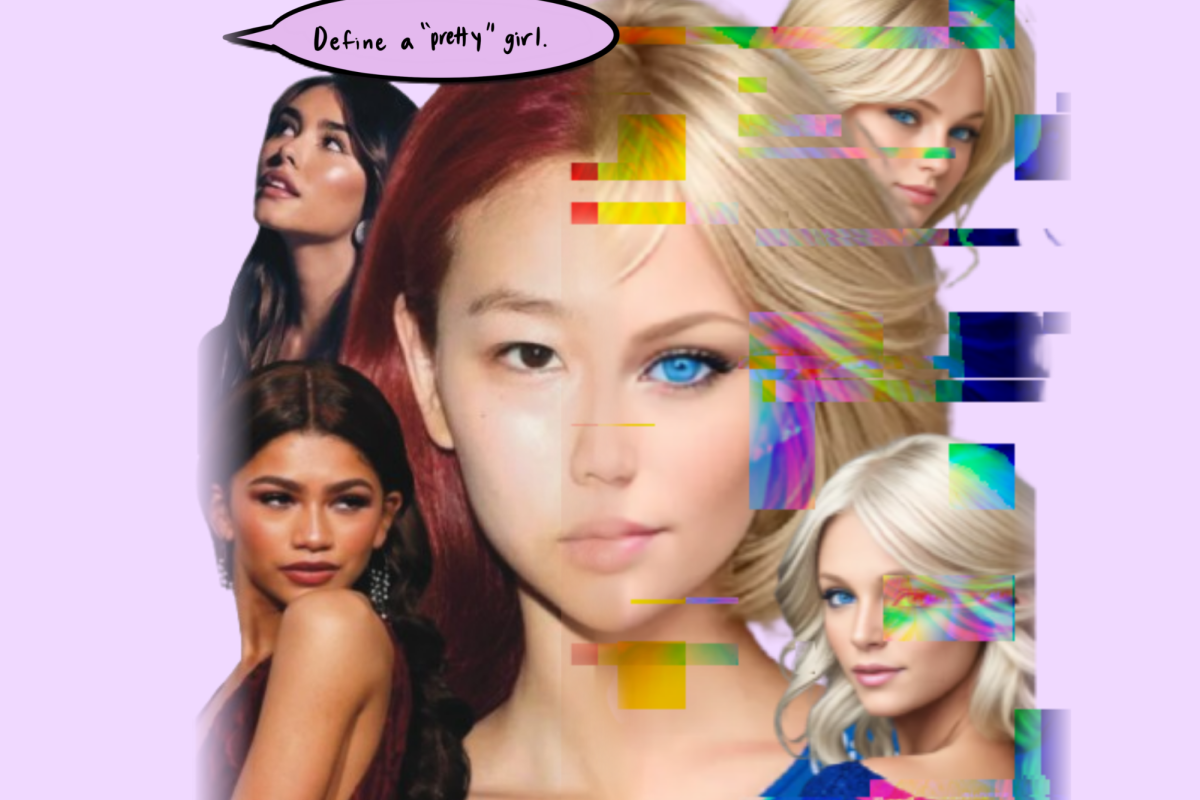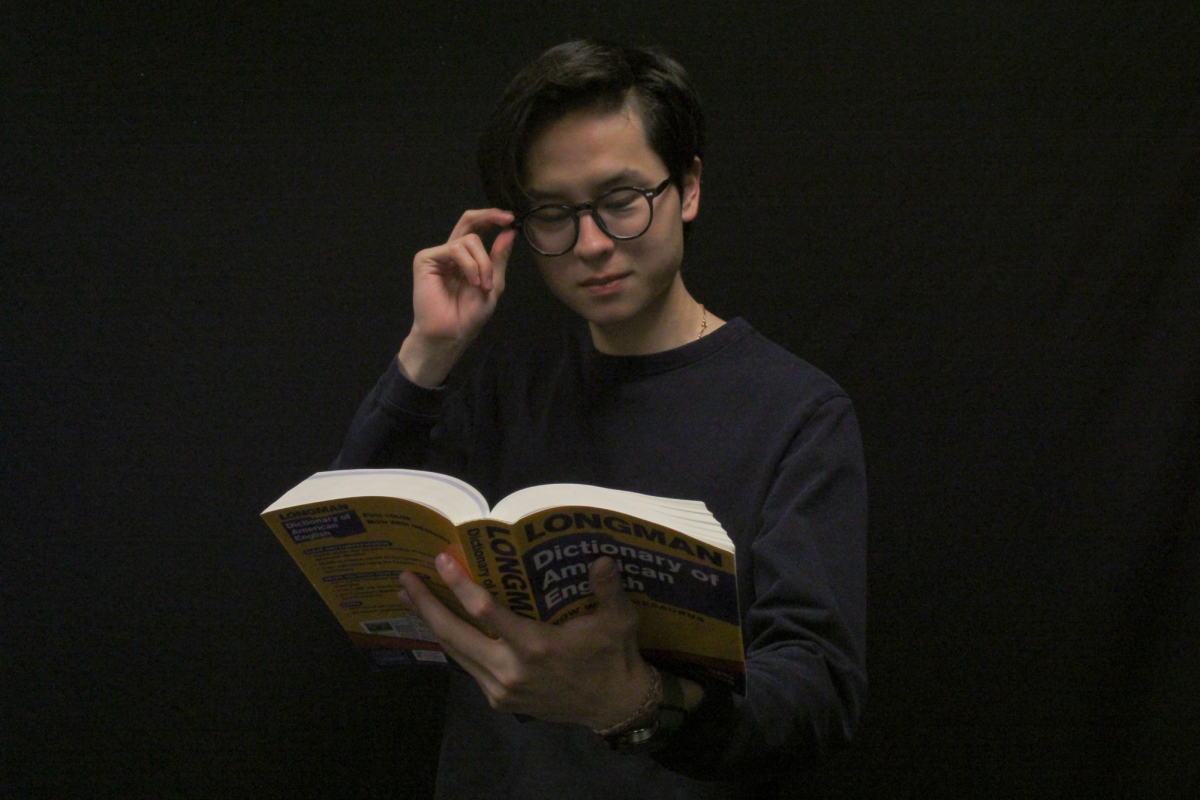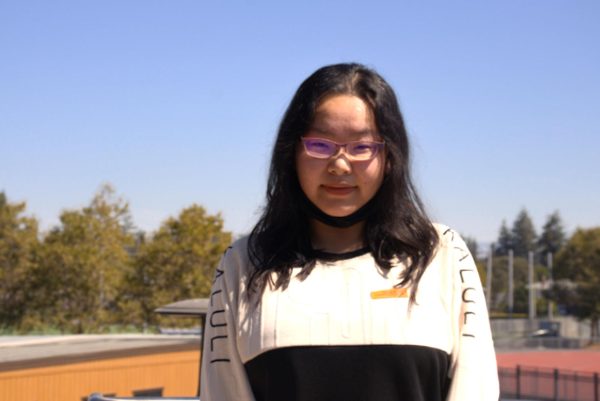- Cases of Myopia among the world population are exponentially rising.
- Countries around the world are implementing new ways to prevent more myopia cases.
- The daily habits of students and their external environments can impact their eyesight.
Myopia, or nearsightedness, is a condition where objects appear clear in person but
blurry from a distance. It was once thought to be an exclusively genetic disorder, but a dramatic
increase in the number of patients with the condition has led researchers to question its causes
and evaluate ways to counteract it. In the early 1970s, around 25% of Americans were myopic,
but over the past few decades, the number has grown to a staggering 41.6%, according to the
National Eye Institute. This sudden increase isn’t only prevalent in the United States, but all
over the world, especially in Asian countries.
“We refer to genetic myopia as pathological myopia,” Assistant Professor of Clinical
Optometry at the UC Berkeley School of Optometry Sarah Singh said. “It’s caused by the
weakening of collagen and tissue in the eye. This makes it likely for the eye length to excessively
elongate, which is what causes myopia.”
The most important components of the eye are the cornea, lens and retina. The cornea
of the eye is a clear tissue covering the eye’s surface, allowing light to enter the eye. The lens is a
clear curved structure situated behind the iris. The curved nature of the lens allows light to
focus upon the lens and send information to the retina. Then the retina, a layer of cells in the
back of the eye that are receptive to light and send the information to the brain, allows people
to see.
Myopia is generally categorized by the severity of perceived blurriness of the eyesight
caused by the overgrowth of the eye axial during adolescence. Children are usually born with
non-spherical eyes that are too short. As they grow, their eyes also grow in size until they reach
a spherical shape, which is ideal for eyesight. Patients with myopia usually have continued
eyeball development, and their eyes stretch beyond normal capacity. This causes light from
closer objects to focus on the retina, while light from objects farther away focuses in front of the
retina, prompting the brain to perceive the light as blurry. Scientists have historically thought of
myopia as hereditary. Still, recent ophthalmology research, along with the sudden rise in
myopia across the world suggests that myopia is caused by both genetics and environmental
factors.
“When I was first diagnosed, a lot of relatives told me that if I did eye exercises my
eyesight would improve and I wouldn’t need glasses anymore,” sophomore Aviva Iyerkhan said.
There is a lot of misinformation about the true causes of myopia, but they are generally
not credible. Common misconceptions include that eye exercises can cure myopia. Although
these exercises can prevent the eyes from straining after looking at screens for a long time, they
cannot cure myopia, according to the American Academy of Ophthalmology.
“Eye massages cannot cure myopia because they cannot change the shape of the eye,”
optometrist Dr. Mai Ngyuen said. “Myopia occurs because the shape of the eye is no longer
spherical. These exercises don’t do anything to shrink the length of the eyeball.”
Many also believe that myopia is an optical problem alone. Although lower levels of
myopia can be corrected by Laser-assisted in situ keratomileusis, also known as LASIK surgical
procedures, higher levels of myopia cannot be cured.
“The underlying disease risk later in life such as glaucoma are all related to axial length,”
ophthalmologist Dr. Jonathan Li said. “Even if myopia is corrected through glasses or, these
treatments cannot change the axial length.”
A primary factor of myopia is genetics. Children of one myopic parent have twice the
chance of developing myopia compared to children of non-myopic parents; five times if both
parents are myopic.
“The changing of daily habits such as the amount of screen time consumed may be the
cause for the rise in myopia,” pediatric optometrist Dr. Elise Harb said.
There are, however, ways to prevent myopia from developing. Recent studies by
Investigative Ophthalmology and Visual Science suggest that the release of dopamine due to
sunlight helps regulate the eye’s growth.
“The reason why outdoors might be beneficial is that it increases dopamine but
dopamine is also known to change its regulation with different other visual experiences not
related to being outdoors,” Dr. Elise Harb said.
Since sunlight stimulates dopamine release, frequent exposure to sunlight can prevent
myopia from developing. Myopia can also be prevented by not looking at objects more than 20
centimeters away since the constant focus on close objects can cause the eye to elongate. Taking
frequent breaks helps avoid straining the eye and allows the eye muscles to relax.
On the market, many of hese technological advancements greatly benefit students
because they provide versatile options to combat myopia. Besides glasses, eye doctors often
prescribe Atropine sulfate drops to use at night. According to the National Library of Medicine,
these eye drops dilate the pupil and inhibit the elongation of the eyeball.
“Atropine drops and Ortho-K are currently the most effective treatments,” Dr. Ngyuen
said. “I usually recommend patients use Atropine drops because Ortho-K can damage the
eyeball if used incorrectly.”
Another common form of treatment for myopia is Orthokeratology lenses, known as
night contacts. Ortho-K lenses temporarily change the shape of the cornea and are used for
correcting moderate myopia. One downside to the treatment, however, is that if used
incorrectly it can scrape the eyeball and cause infections.
Having this option encouraged students like Zhou to explore new technology that has
the same effect on combating myopia as glasses.
“I think getting contacts boosted my self-esteem because I was insecure in middle
school and was concerned about my vision,” Zhou said. “Other than being a dancer, I didn’t like
how glasses looked on me, so I got Ortho-K.”
Because of the age-old stigma around those who wear glasses, students may gravitate
toward options like Ortho-K so they can see normally without the usage of glasses. Ortho-K
currently has the largest volume of evidence of slowing down the progression of myopia
compared to standard vision glasses. According to the Review of Myopia Management, Ortho-K
lenses can slow down myopia by around 50%. Although myopia can still progress while using
Ortho-K lenses, the lenses reduce its progression speed if worn regularly. There is strong
evidence that Ortho-K lenses control myopia progression for children under 16 years old.
According to the American Academy of Ophthalmology, Atropine sulfate drops can also be used
before putting in Ortho-K lenses. However, the combination of the two only seems to work
within the first six months of joint usage.
“The two treatments work together better than alone, but they only work better
together for the first six months,” Nguyen said. “They still work to combat myopia after the six
months, but this joint usage shows no noticeable benefit compared to when used separately
after those six months.”
Refractive surgery is another way to correct myopia. LASIK is commonly used to fix
eyesight in adults 18 years or older. As newer technology is pushed out, students have more
methods to combat myopia. Students with myopia may suffer from seating charts and blurry
vision. If students miss a night of wearing Ortho-K, they will not be able to see normally. This
may cause issues with their ability to learn that day because of their impaired eyesight.
“My eyesight is fine when I don’t wear my contacts the first few days,” junior Ethan Chen
said. “After a few days, my eyesight degrades and it’s hard to see things. If the board has small
lettering, I can’t see clearly.”
As the world changes, the daily habits of many change as well. As the daily habits of
students change, doctors are now finding new ways to combat myopia.
“There is a lot of ongoing research to better understand how students’ environments
play a role,” Dr. Harb said. “It’s not a bad idea to try to get outdoors often and not be outdoors
just looking at the phone but being outdoors and looking at further distances and in bright
light. Taking breaks from work is important.”






















































